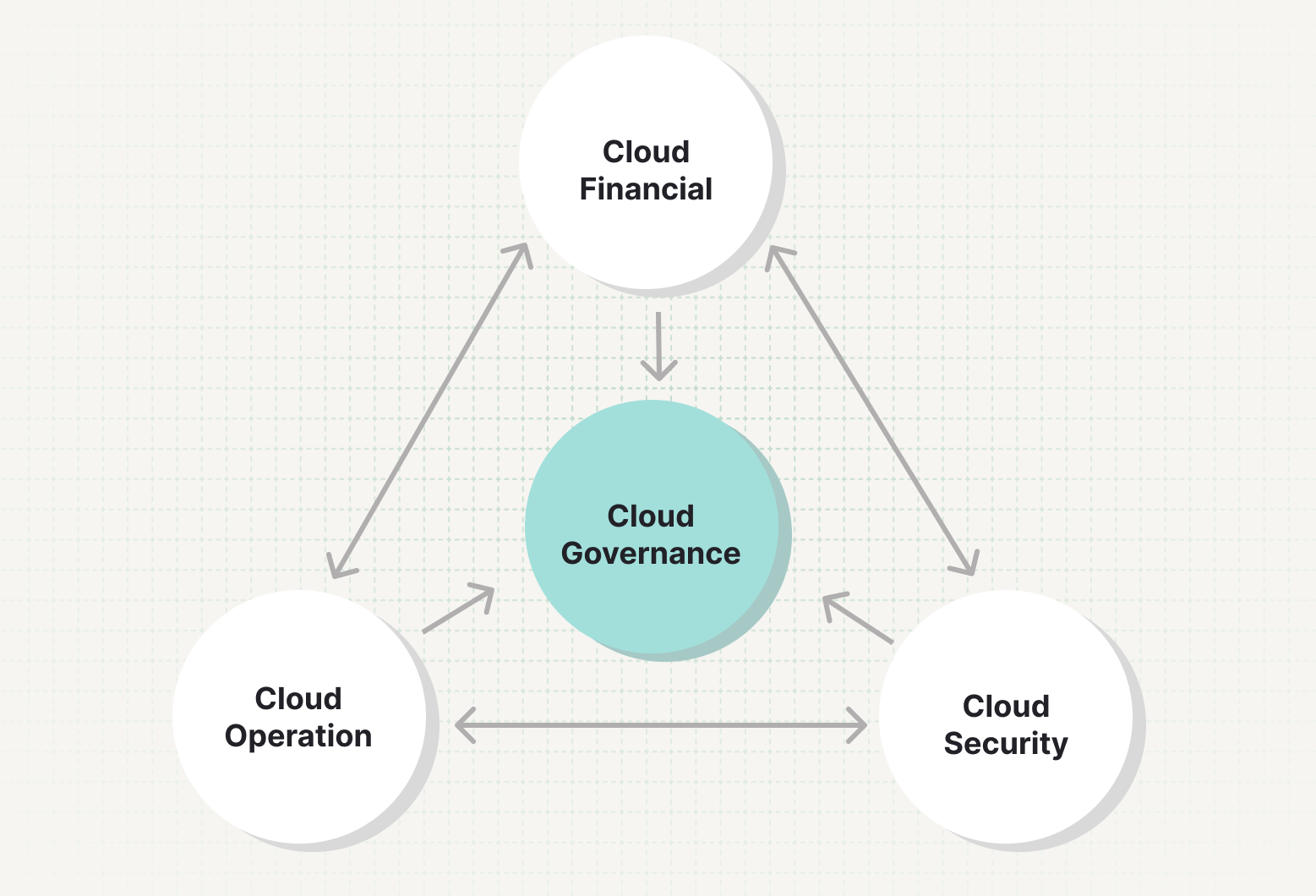Managing cloud infrastructure efficiently while maintaining compliance, security, and cost optimization is critical for businesses t’s essential to understand the concept of cloud governance and how it helps in ensuring that cloud resources are used efficiently, securely, and in compliance with organizational policies.
In this blog, we'll explore cloud governance, its core principles, and provide practical examples to help cloud engineers master this important aspect of cloud management.
What is Cloud Governance?
Cloud governance is about setting rules and controls to manage cloud resources effectively. It helps organizations keep their cloud environments secure, cost-efficient, and running smoothly, while also ensuring compliance with regulations. It provides safeguards to avoid mistakes, data leaks, or overspending.
Cloud governance focuses on these key areas:
- Compliance: It helps follow important rules like GDPR or HIPAA, preventing legal issue. Cloud governance makes sure that cloud usage meets industry standards and company policies, lowering the risk of fines or legal issues.
- Cost Management: It keeps track of cloud costs to avoid overspending and uses resources wisely. With governance in place, businesses can monitor usage, spot waste, and manage resources efficiently.
- Data Security: Cloud governance lets you create rules to keep sensitive information safe, blocking unauthorized access and making sure data stays accurate. This includes using strong security tools like encryption, access controls, and regular security checks
- Risk Mitigation: It spots and handles risks before they turn into big issue. Good governance includes strategies to predict, assess, and reduce potential threats.
- Performance Optimization: It makes sure applications run well by monitoring how the system performs. Governance helps set performance goals and regularly checks to keep everything running smoothly.
Why is Cloud Governance Important?
Cloud engineers are at the forefront of implementing, managing, and scaling cloud infrastructures. Without proper governance, organizations can face issues. Effective cloud governance helps mitigate risks, allowing cloud engineers to focus on innovation and agility rather than firefighting issues caused by poor management.
- Security: Without governance, sensitive data could be exposed, or resources may become vulnerable to attacks. Imagine if your cloud storage doesn’t have proper access controls, and someone from outside your company could access sensitive files. Governance policies prevent this from happening.
- Cost Management: Cloud resources can quickly become expensive if left unchecked. Governance helps in monitoring and managing spending effectively. You might spin up a server for a short-term project, but forget to shut it down when it’s no longer needed. Governance rules ensure that unused servers are automatically decommissioned, saving costs.
- Compliance: Many industries require businesses to follow strict regulations, such as GDPR or HIPAA. Cloud governance ensures compliance with these standards. A healthcare organization must ensure that patient data is stored securely and only accessed by authorized personnel. Governance policies help maintain compliance with healthcare regulations.
Core Pillars of Cloud Governance
To become experts in cloud governance, cloud engineers should pay attention to these key areas
- Cost Control and Optimization
One of the biggest challenges companies face is controlling their cloud spending. Cloud engineers should create cost management plans to make sure cloud resources are used wisely. Consider a big company switched to AWS and noticed its monthly cloud bills were getting very high. After looking into it, the engineers found that many EC2 instances were running all the time but weren't being used much. By setting up automatic shutdowns for these instances during off-hours and adjusting the resources to better fit their needs, the company cut its cloud bill by 40%.- Resources Tagging: Tag resources to track cost allocation across departments.
- Reserved instances: use reserved instances or savings plans for predictable workloads
- Auto-scaling: establish auto-scaling and automated shutdown policies to reduce idle resources
- Security and Identity Management
Security is very important in cloud governance. Mistakes in settings can create serious risks. Cloud engineers need to put in place strong security rules to protect the cloud systems and data. For an example a retail company using Google Cloud accidentally made its storage bucket public, exposing sensitive customer data. After this security issue, the cloud team set up IAM roles and enforced the principle of least privilege to make sure only authorized users could access sensitive resources.- IAM roles: use IAM roles by defining and assigning them based on the principle of least privilege
- MFA: enable Multi-Factor Authentication (MFA) for all cloud users
- Data encryption: encrypt data both in transit and at rest.
- Compliance and Risk Management:
In many industries, following rules like GDPR, HIPAA, or PCI-DSS is a must. Cloud governance helps make sure that all cloud activities meet these requirements. Consider a healthcare provider using Azure Cloud had to meet HIPAA rules. The cloud team used Azure Policy to apply compliance rules across the system. They used built-in blueprints to manage risks and make sure all services followed data protection guidelines.- Policies and Audits : implement policies and audits using cloud-native tools (e.g., AWS Config, Azure Policy) to enforce compliance rules and automate auditing
- Automate reporting: generate compliance reports that track adherence to internal and external policies
- Performance and Operational Governance:
Making sure the cloud infrastructure runs well is another key part of governance. Cloud engineers need to keep an eye on and improve workloads regularly. For an example a fintech company had slow performance because of poor database settings on AWS RDS. The cloud team used AWS CloudWatch to check performance, found the issues, and improved their database setup, boosting performance by 30%."- Resource monitor : monitor resource utilization by setting up alerts with tools like CloudWatch, Azure Monitor, or Google Stackdriver
- Automate Scaling: automate scaling to adjust resources based on demand
- Analysis : regularly analyze and act on cloud performance metrics
Conclusion
Cloud governance is important for cloud engineers to maintain a well-managed, secure, and cost-effective cloud setup. By setting clear rules, using the right tools, and constantly monitoring the system, you can manage your cloud infrastructure effectively. Whether you're using AWS, Azure, or Google Cloud, mastering cloud governance helps you get the most out of cloud computing without losing control or security.
Start with small steps, put key policies in place, automate where you can, and stay updated on the changing needs of your cloud environment

